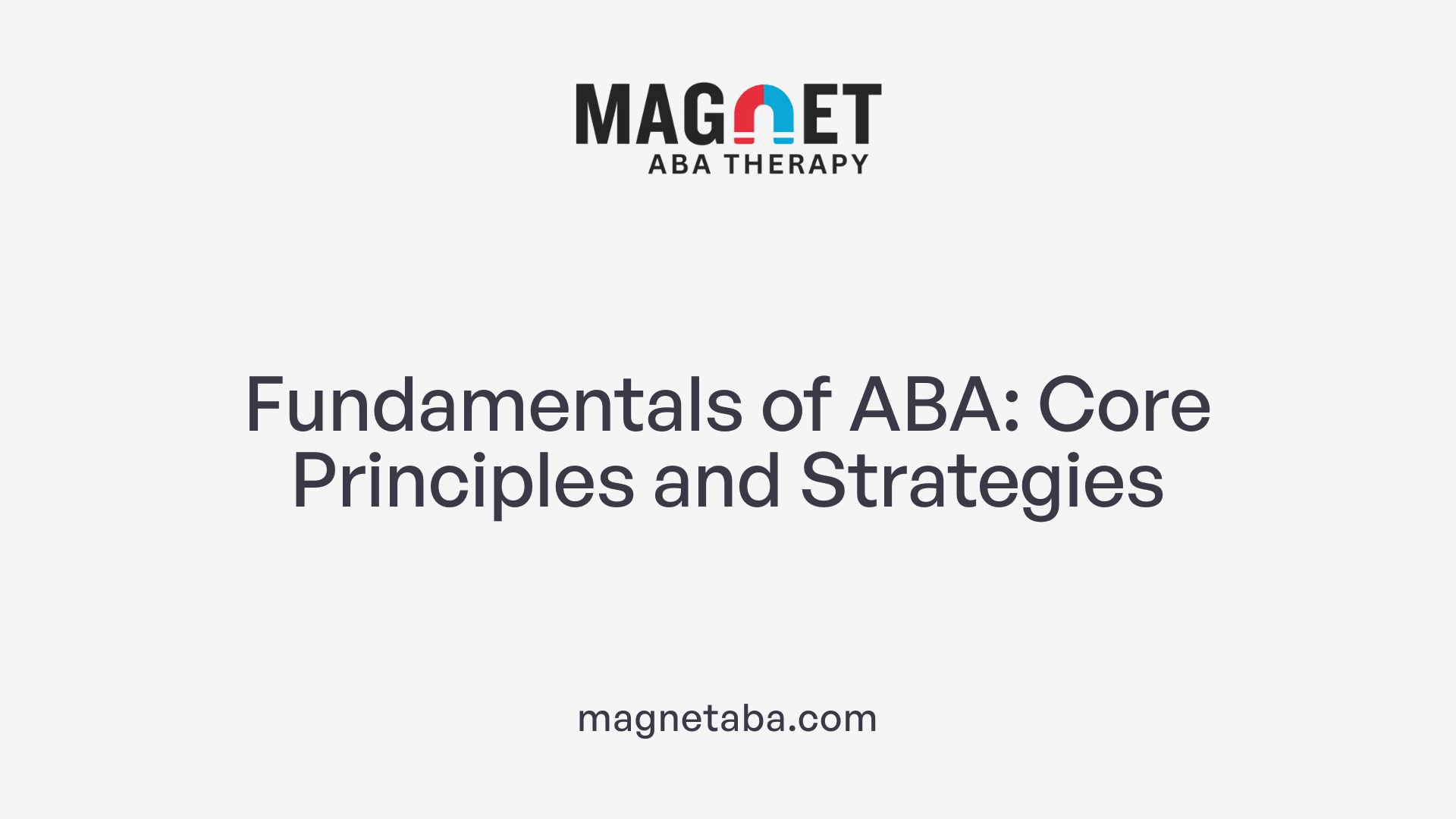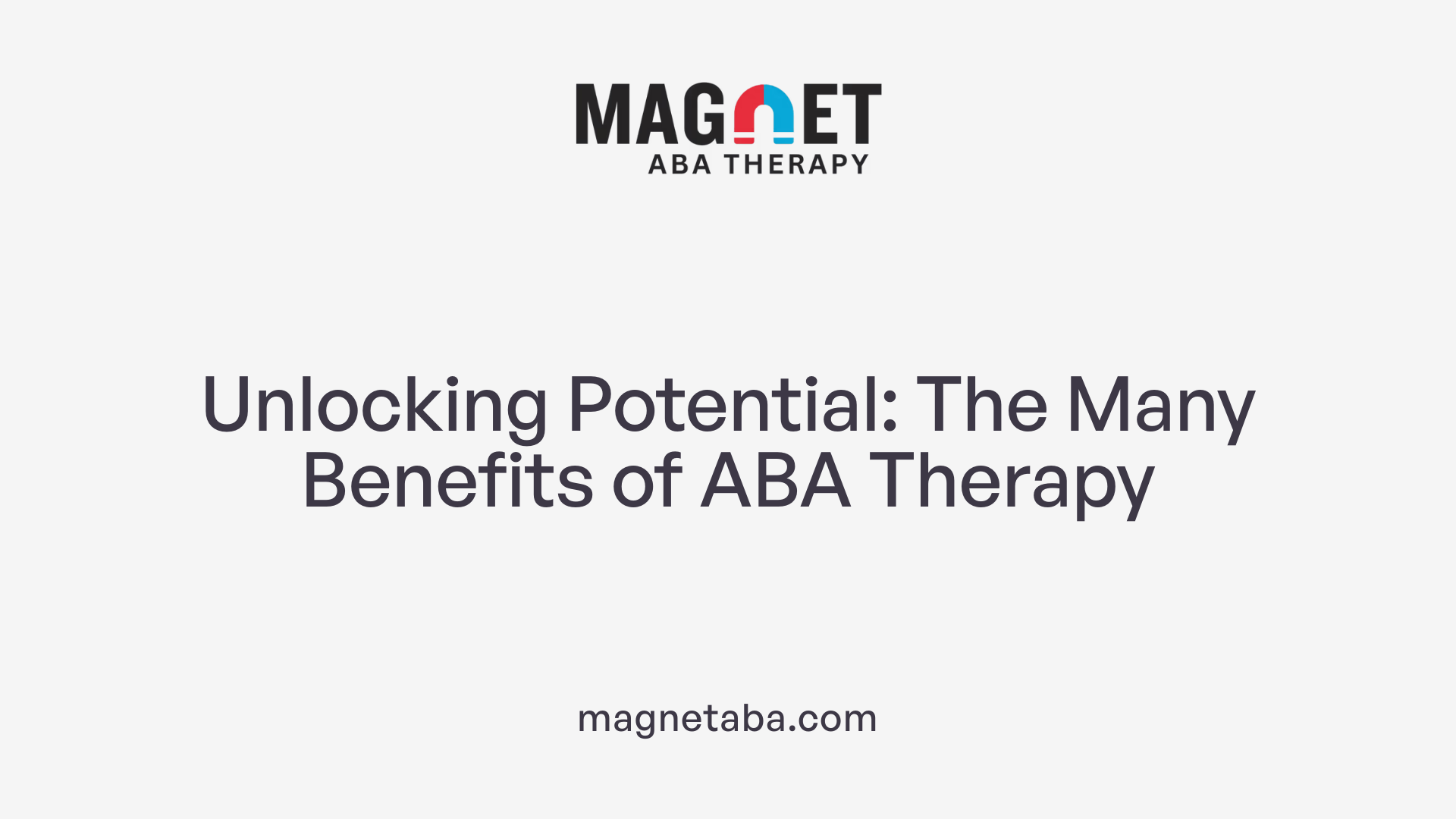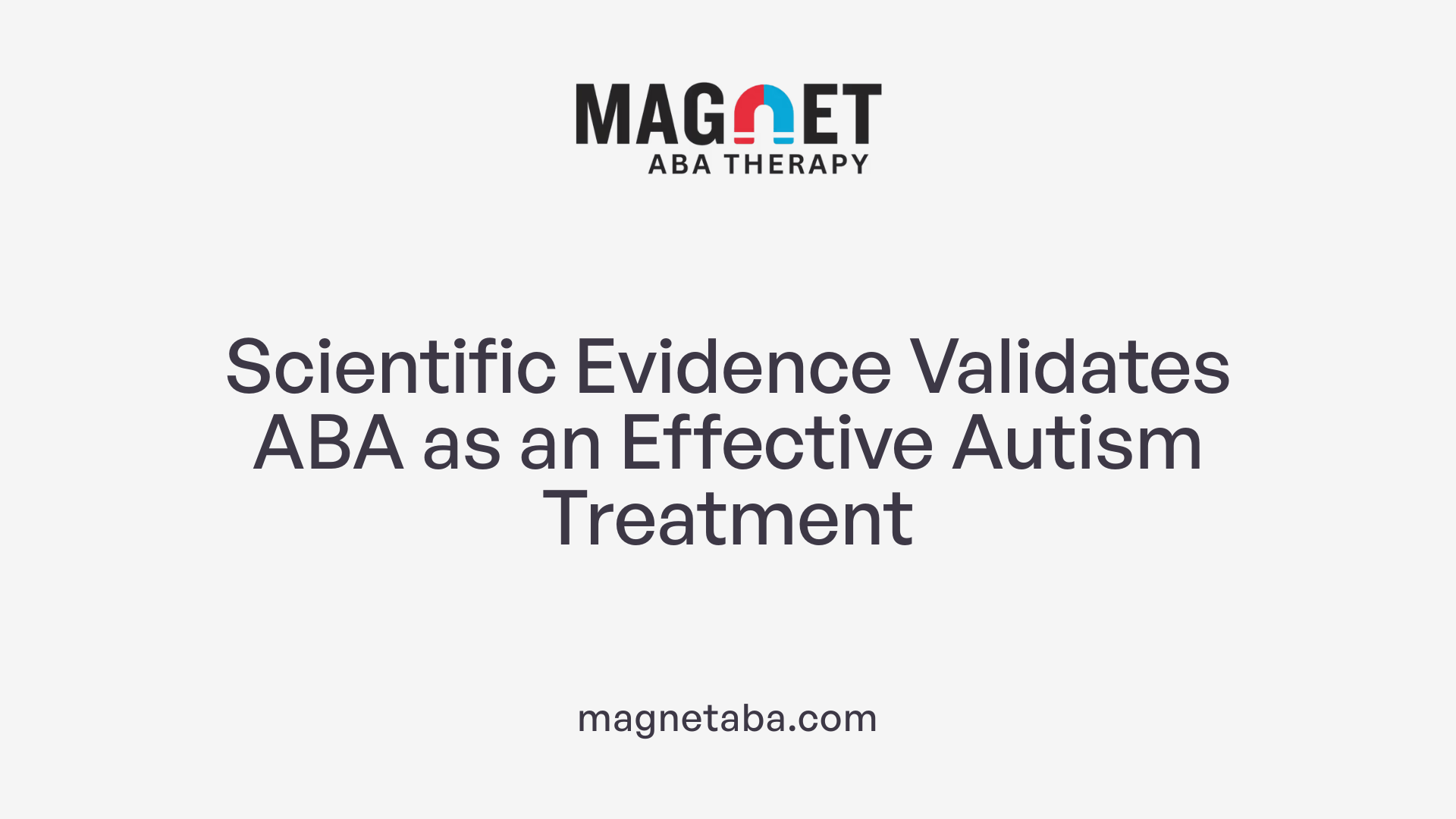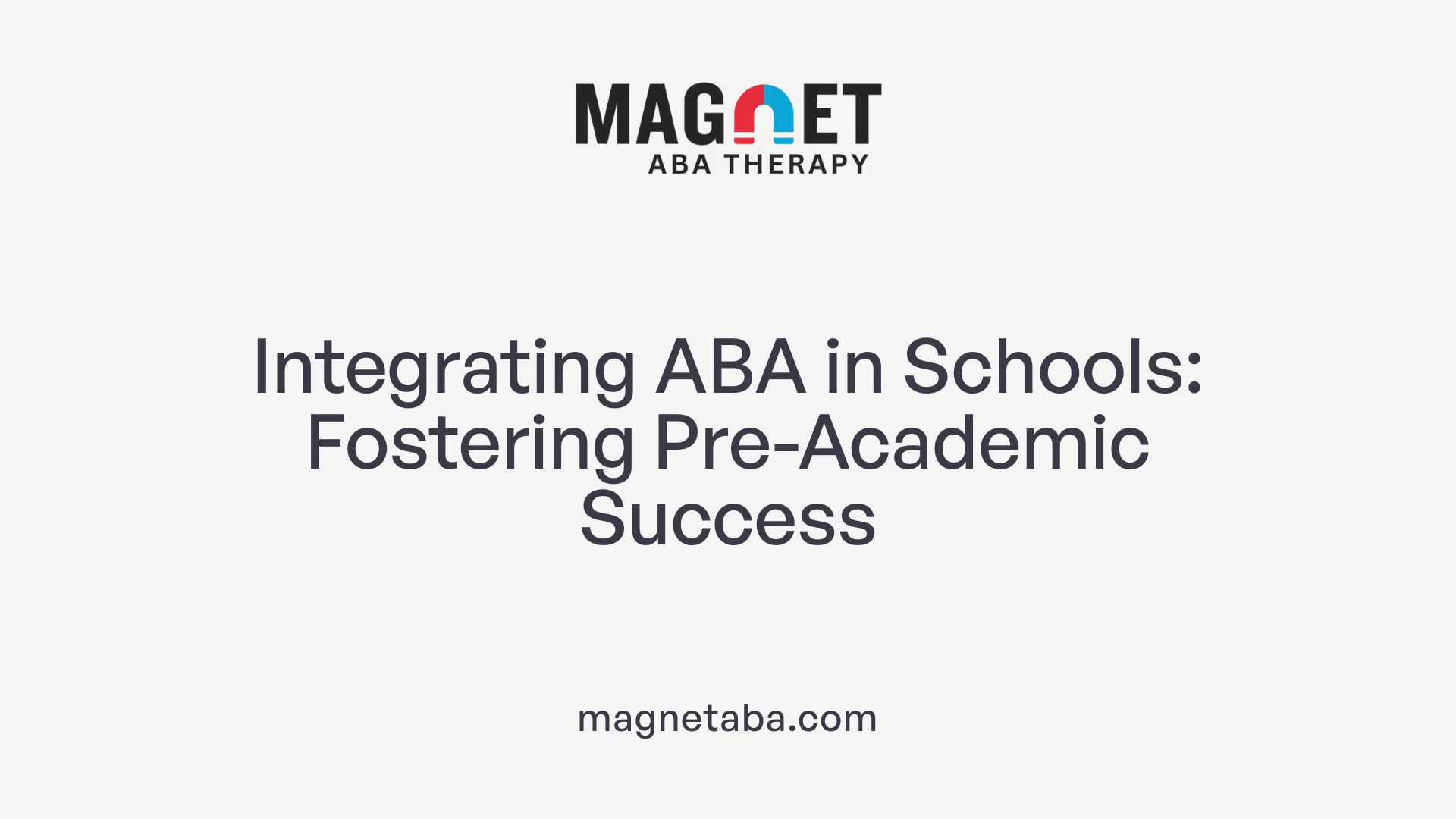The Power of ABA in Early Skill Development
Applied Behavior Analysis (ABA) is a scientifically grounded therapy that has revolutionized the teaching of pre-academic skills, especially in children with autism spectrum disorder. By systematically applying learning principles such as positive reinforcement and behavior analysis, ABA supports skill acquisition in communication, social interaction, and cognitive domains that are critical to early education. This article explores how ABA therapy works, the role of qualified providers, evidence supporting its effectiveness, and practical techniques used in fostering pre-academic competencies essential for academic success and independence.
Understanding Applied Behavior Analysis Therapy and Its Core Principles

What is Applied Behavior Analysis (ABA) therapy?
Applied Behavior Analysis (ABA) therapy is a scientifically based treatment grounded in the principles of learning and behaviorism. It focuses on increasing helpful behaviors such as communication, social interaction, and daily living skills while decreasing harmful or disruptive behaviors. ABA uses strategies like positive reinforcement, prompting, and systematic data collection to track progress. This therapy is widely recognized for helping children with autism spectrum disorder by teaching new skills through structured, personalized programs developed by qualified professionals called Board Certified Behavior Analysts (BCBAs).
What are the goals of ABA in behavior modification?
ABA aims to increase adaptive and useful behaviors while reducing behaviors that interfere with learning or socialization. The therapy targets improvements in language, attention, memory, academic skills, and social functioning. Through breaking complex skills into small, manageable parts and reinforcing each step, ABA helps individuals acquire functional abilities that promote independence and enhance quality of life.
How does positive reinforcement play a role in ABA?
A central technique in ABA is positive reinforcement, which encourages desired behaviors by rewarding them immediately after they occur. Rewards can be verbal praise, tokens, or preferred activities. This method increases the likelihood that the behavior will be repeated, making learning effective and motivating.
How is ABA individualized and in what settings is it provided?
ABA programs are highly individualized to meet each person's unique needs, strengths, and challenges. It can be delivered in various environments such as the home, school, or community settings. The flexibility of ABA allows it to be adapted for different ages and situations, ensuring the therapy fits the client’s lifestyle and promotes skill generalization across settings.
What about ongoing assessment and professional oversight?
ABA involves continuous assessment and data collection to monitor progress and adjust interventions as necessary. Qualified professionals, especially BCBAs, design and supervise treatment plans. They ensure programs remain effective by analyzing behavioral patterns and outcomes, providing consistent, evidence-based care tailored to evolving needs.
Benefits of ABA Therapy for Individuals on the Autism Spectrum

Skill Areas Enhanced by ABA
ABA therapy is widely recognized for its ability to improve multiple skill areas in individuals with autism. It targets language development, communication skills, attention, social interactions, memory, and academic abilities. By breaking skills into manageable steps and using repetition and reinforcement, ABA fosters learning in both academic and daily living contexts.
Communication and Social Skills Improvements
One of ABA's primary goals is to enhance communication and social skills. Techniques such as Discrete Trial Training and verbal behavior approaches systematically teach children how to express themselves and engage with others more effectively. This development fosters better social participation and interaction with peers and family.
Reduction of Problematic Behaviors
ABA focuses on decreasing harmful or disruptive behaviors through understanding antecedents, behaviors, and consequences. Positive reinforcement strategies encourage desirable behaviors by rewarding them, which helps reduce problematic actions. Personalized behavior plans that address specific challenges contribute to improved behavioral outcomes.
Importance of Early Intervention
Starting ABA therapy early, typically between ages 2 and 6, leads to better developmental and social outcomes. Early intervention capitalizes on the brain's plasticity during these formative years, making it easier to establish communication and pre-academic skills. However, ABA remains effective for older children and adults as well.
Enhancement of Independence and Functional Abilities
Through careful task analysis and teaching routines, ABA promotes independence in everyday activities. Skills such as following daily schedules, completing school tasks, and managing social interactions are developed to help individuals function more autonomously. The involvement of families ensures that learned skills generalize across settings, boosting long-term independence.
Overall, ABA therapy supports individuals with autism by combining individualized, evidence-based techniques that address a broad range of developmental needs. Its positive impact on communication, behavior, and independence has made it an essential intervention for promoting quality of life and self-sufficiency.
The Role of Qualified Professionals in Delivering ABA Therapy

Qualifications of ABA Providers
ABA therapy is delivered by professionals specially trained in behavior analysis. The primary providers are board-certified behavior analysts (BCBAs), who have extensive education and certification in developing and overseeing effective treatment plans. Other qualified practitioners include board-certified assistant behavior analysts (BCaBAs), qualified behavior analysts (QBA), and qualified autism service practitioners (QASP S). These credentials ensure providers have the knowledge to apply evidence-based strategies responsibly.
Roles of BCBAs and Therapists
BCBAs design individualized ABA programs by assessing each child's unique needs and goals. They supervise and train therapists who work directly with clients, conducting therapy sessions using positive reinforcement and other ABA techniques. Therapists implement day-to-day interventions, helping children acquire new skills gradually and encouraging generalization across settings.
Importance of Individualized Treatment Planning
Each ABA program is tailored to a child’s specific behaviors, communication, and learning profile. Treatment plans are created based on ongoing data collection and behavioral assessments to ensure effectiveness. This individualization maximizes progress and addresses challenging behaviors effectively.
Supervision and Ongoing Adjustments During Therapy
ABA providers continuously monitor treatment outcomes. BCBAs regularly review data and make necessary adjustments to goals and methods. This dynamic supervision ensures therapy adapts to the child's evolving needs and fosters consistent skill development.
Collaboration with Families and Educational Settings
Family involvement is integral to ABA’s success. Providers work closely with parents to reinforce strategies at home. Additionally, ABA professionals collaborate with schools to support children in educational environments, assisting with social skills, communication, and behavior management within inclusive classrooms.
Overall, the delivery of ABA therapy relies on a coordinated team of qualified professionals committed to personalized, evidence-based interventions that promote meaningful improvements in children’s abilities and quality of life.
Key Techniques Used in ABA to Teach Pre-Academic Skills
What techniques are commonly used in ABA therapy?
ABA therapy uses a variety of effective techniques to teach pre-academic skills, focusing on individualized, structured learning.
Positive reinforcement and token systems
Positive reinforcement is central to ABA and involves rewarding desired behaviors to encourage their recurrence. One popular method is the token system, where children earn tokens for completing tasks or demonstrating specific skills. These tokens can then be exchanged for preferred items or activities, making learning motivating and rewarding.
Task analysis and behavior chaining
Complex skills are broken down into smaller, manageable steps through task analysis. Each step is taught sequentially, which helps children gradually master routines or academic skills. Behavior chaining links these small steps into a complete routine or skill, enabling children to perform multi-step tasks independently.
Discrete Trial Training (DTT) structure
DTT is a structured teaching method where specific skills are broken into clear, teachable units or trials. Each trial includes instruction, prompts if needed, the child's response, and reinforcement. This step-by-step, repetitive instruction supports learning new concepts, vocabulary, or social skills effectively.
Use of prompting and fading
Prompts—such as verbal cues, gestures, or physical assistance—help initiate a correct response during learning. Over time, prompts are gradually reduced or faded, encouraging the child to respond independently.
Visual supports and modeling strategies
Visual aids like charts, pictures, and the Picture Exchange Communication System (PECS) enhance comprehension and communication. Modeling and video modeling demonstrate target behaviors or skills, allowing children to imitate and learn effectively.
Generalization of skills across environments
ABA emphasizes practicing skills in multiple settings such as home, school, and community. This approach ensures that learned skills transfer beyond therapy sessions, making them functional in everyday life.
Together, these techniques form a comprehensive, evidence-based approach that helps children with autism develop pre-academic skills and gain independence in learning.
| Technique | Description | Benefit |
|---|---|---|
| Positive reinforcement | Rewarding desired behavior, often with tokens | Motivates and increases behavior frequency |
| Task analysis & chaining | Breaking skills into smaller steps and linking them | Facilitates complex skill mastery |
| Discrete Trial Training (DTT) | Structured, repetitive teaching trials | Effective for teaching specific skills |
| Prompting and fading | Providing cues then gradually removing them | Supports independent skill acquisition |
| Visual supports & modeling | Using images and demonstrations to teach behaviors | Improves understanding and skill learning |
| Generalization | Practicing skills in different settings | Ensures real-life application of skills |
Evidence Supporting ABA as an Effective Intervention for Autism

Is ABA therapy evidence-based?
Yes, Applied Behavior Analysis (ABA) therapy is firmly rooted in scientific research and has been validated over decades. It is recognized by leading authorities, including the US Surgeon General and the American Psychological Association, as a best practice for autism treatment.
Scientific research validating ABA
ABA's effectiveness has been confirmed by over 20 rigorous studies, including randomized controlled trials and single-case experimental designs. These studies consistently demonstrate improvements in areas such as intellectual functioning, language development, daily living skills, and social behaviors for individuals with autism. Its methods are based on the science of learning and behavior, making it a comprehensive approach grounded in empirical evidence.
Recognition by health and psychological authorities
The US Surgeon General and the American Psychological Association have both endorsed ABA as an evidence-based therapy for autism spectrum disorders. This recognition highlights ABA's status as a credible and scientifically supported intervention used widely across clinical and educational settings.
Outcomes in communication, social, and cognitive domains
ABA therapy targets a broad spectrum of skills including communication, social interaction, attention, memory, and academic capabilities. Children receiving ABA show increased expressive and receptive language skills, improved social engagement, and enhanced daily living abilities. The therapy’s structured approach, which breaks down skills into manageable steps reinforced with positive reinforcement, facilitates meaningful progress.
Importance of early, intensive therapy
Early intervention, especially when initiated between ages 2 and 6, is strongly associated with better developmental outcomes. Intensive, long-term ABA therapy leads to substantial gains in language, social communication, and cognitive functioning. While the greatest benefits are observed with early treatment, ABA can be effective at any age.
Insurance coverage and accessibility
Many private insurance plans and Medicaid cover ABA therapy when prescribed by healthcare professionals, improving accessibility for families. Qualified Board Certified Behavior Analysts (BCBAs) oversee individualized programs, ensuring treatments meet each child’s unique needs. This structured support helps maintain consistency and maximize benefits across home, school, and community settings.
Applying ABA Strategies in Educational Settings to Foster Pre-Academic Abilities

Integration of ABA in inclusive classrooms
ABA principles are widely applied in inclusive educational settings to support students with autism alongside their peers. This approach promotes participation and learning by using evidence-based techniques that are adaptable to diverse classroom environments.
Use of task analysis for academic routines
Task analysis breaks down complex academic and daily routines into smaller, manageable steps. For example, arriving at school or completing classroom tasks can be taught through step-by-step instruction, improving student independence and success.
Role of reinforcement and behavior modification in school
Positive reinforcement is central in ABA to encourage desired behaviors. In schools, token boards or verbal praise are often used to reward students for task completion or social interactions. Behavior modification strategies help reduce disruptive behaviors, enhancing the educational experience.
Support for social participation and communication
ABA techniques promote communication and peer interactions within the classroom. Strategies include using scripts and choral responding to teach vocabulary and social skills, fostering a supportive environment for all students.
Ensuring skill generalization and independence
ABA programs emphasize generalization, helping students apply learned skills across different settings and situations. This supports greater independence and prepares students for varied social and academic contexts.
Compliance with IDEA and provision of supplementary aids
ABA-based interventions align with the Individuals with Disabilities Education Act (IDEA), which mandates education in the least restrictive environment. Supplementary aids and services, informed by ABA, support students in general education classrooms without stigmatization, ensuring equal access to learning opportunities.
ABA’s Transformative Impact on Early Education and Beyond
Applied Behavior Analysis offers a powerful, scientifically validated approach to teaching pre-academic skills that are foundational for lifelong learning and independence, especially for children with autism. Its individualized, data-driven methods emphasize reinforcing positive behaviors and skill mastery while reducing barriers to learning. With trained professionals guiding tailored interventions, ABA fosters significant gains in communication, social interaction, and cognitive abilities. When integrated into educational environments in compliance with legal frameworks supporting inclusion, ABA strategies promote seamless skill generalization and student success. As evidence continues to underscore its efficacy, ABA remains an indispensable tool in early education, unlocking potential and enhancing quality of life for children and their families.
References
- Applied Behavior Analysis (ABA)
- Applied Behavior Analysis (ABA) for Children With Autism
- Effective ABA Strategies for Students with Autism
- How ABA Therapy Can Improve Your Child's Life
- Using Applied Behavior Analysis to Educate Students with ...
- Applied Behavior Analysis (ABA)
- The Top 10 Reasons Children With Autism Deserve ABA
- Applied Behavior Analysis (ABA)
- 6 Benefits of ABA Therapy for Children with Autism












